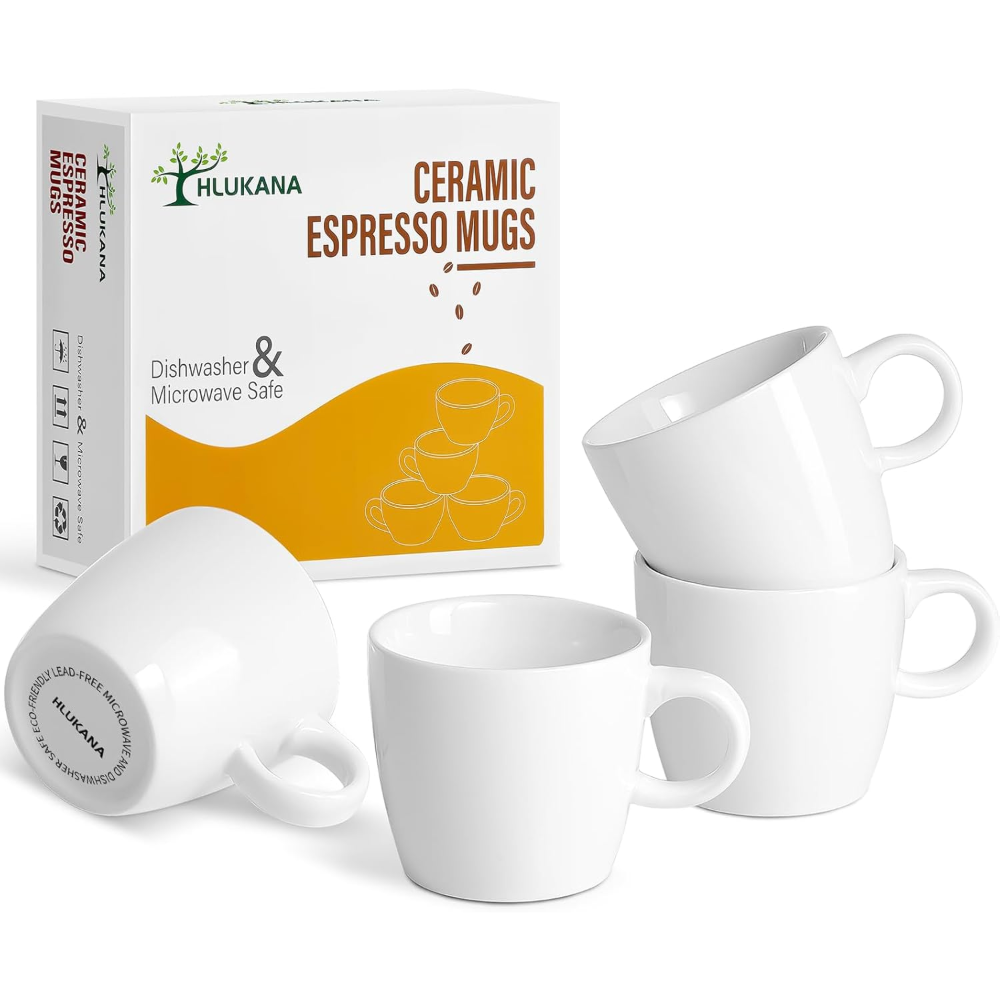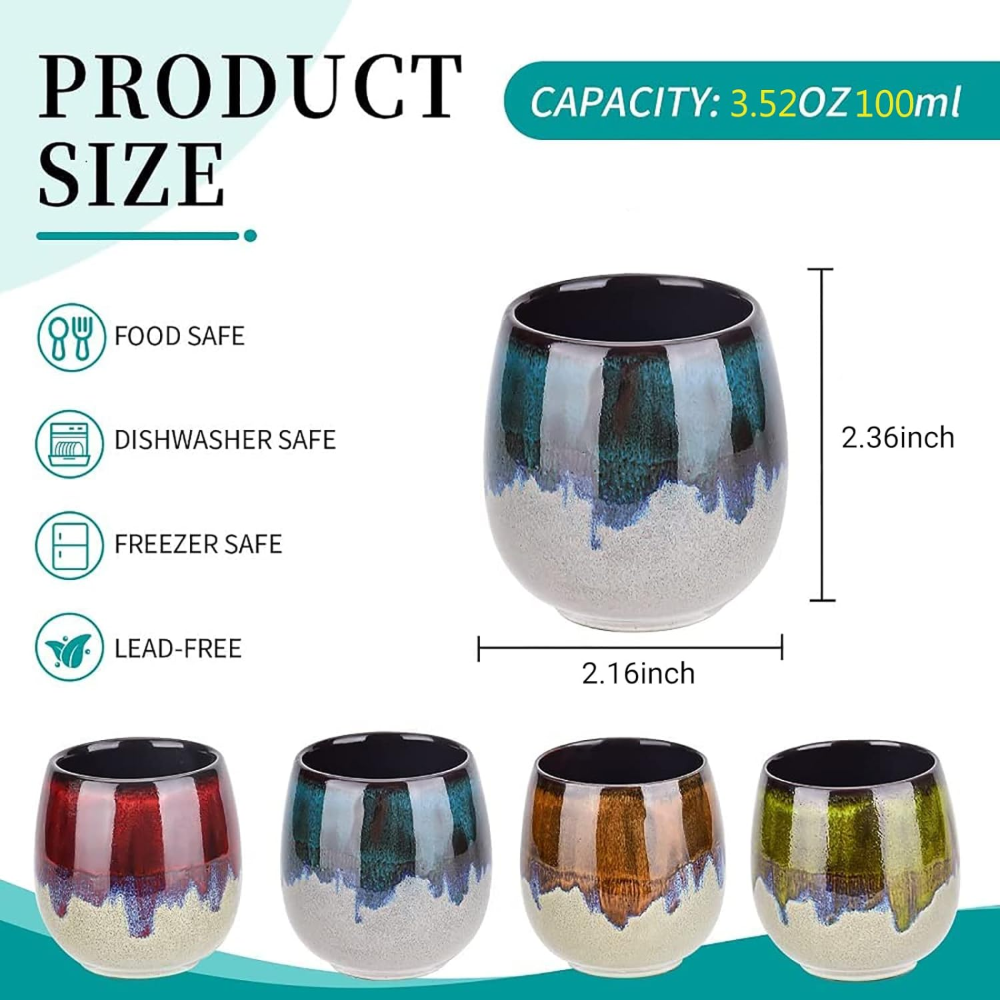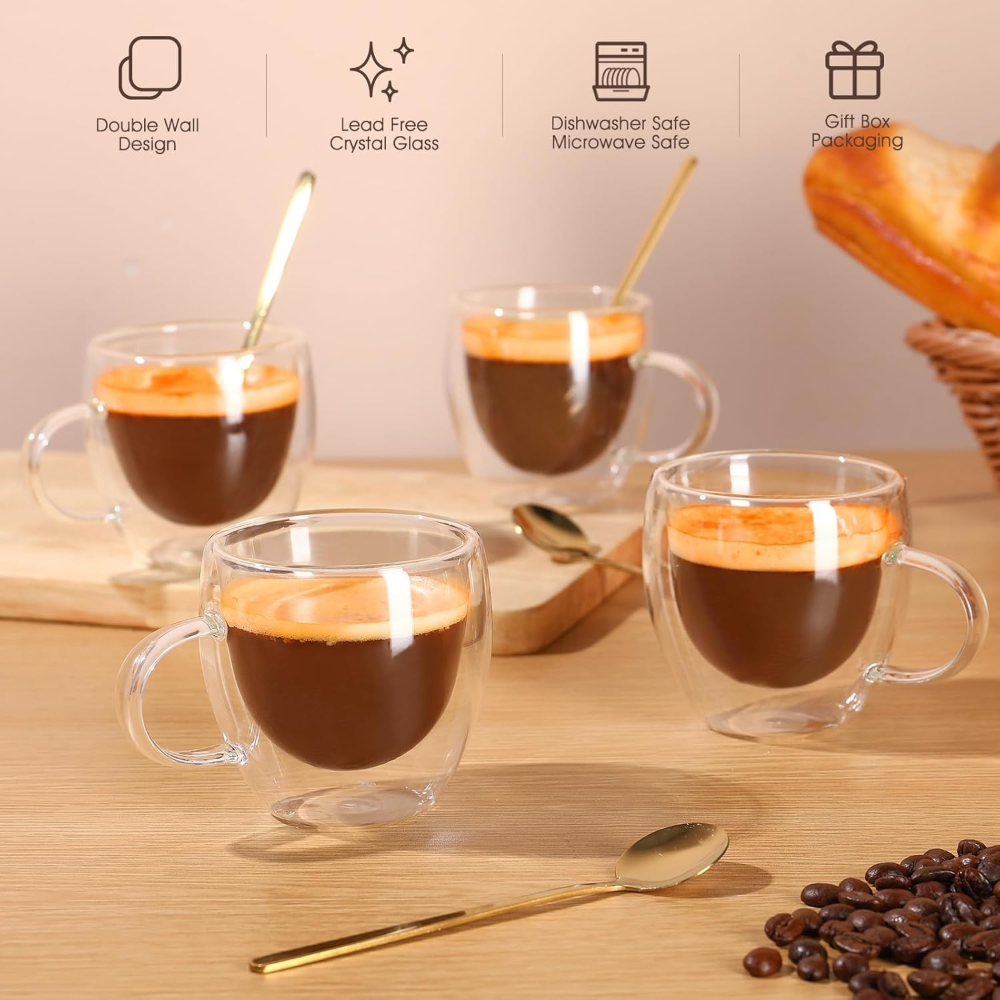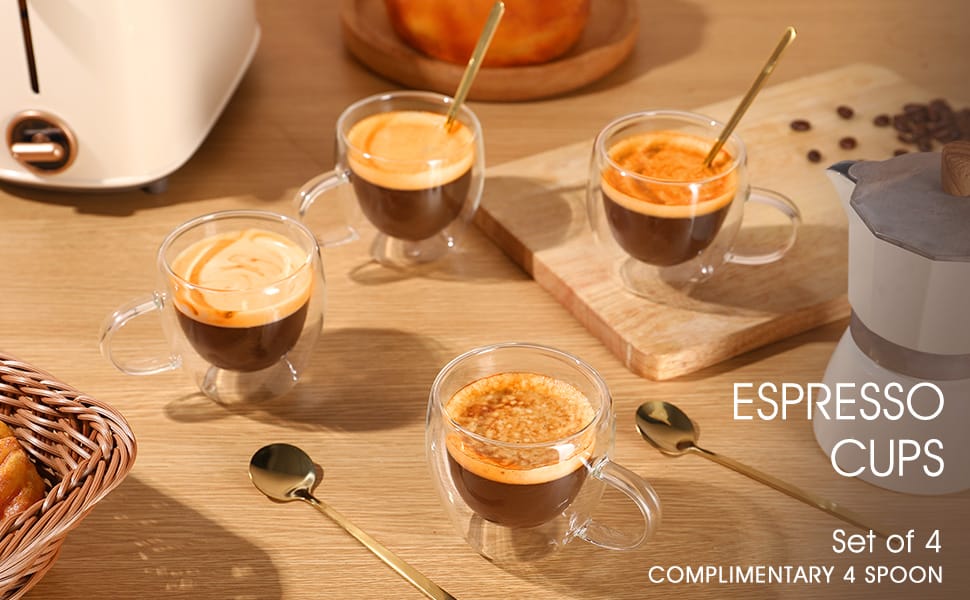Picture this: You wake up to the rich scent of fresh espresso, steam rising from a small, sleek cup that fits just right in your hand. That tiny vessel isn't just a holder—it's the heart of the espresso ritual, a nod to old Italian ways that make every sip feel special. An espresso cup pulls you into a world of bold flavors and quick moments, turning a simple drink into something more.
If you love coffee at home or work as a barista, knowing about espresso cups can change your routine. The right one keeps the heat in and lets aromas bloom, making that shot taste even better. This guide dives into the history, features, types, care tips, and why these cups add so much to coffee life. You'll walk away ready to pick your perfect match.
The History and Origins of the Espresso Cup
Espresso cups trace back to the early days of strong coffee in Italy. They grew from the need for quick, intense brews in busy cafés. Let's explore how they came to be and spread around the world.
Early Development in Italian Coffee Culture
Luigi Bezzera invented the first espresso machine in 1901. It forced hot water through coffee grounds fast, creating a concentrated shot. Cafés in places like Milan and Turin needed small cups for this—called demitasse, meaning "half cup" in French—to match the tiny serving size.
Before that, folks used bigger mugs for milder coffee. But espresso changed everything. The compact design kept the crema, that foamy top, thick and fresh. Baristas in those old spots served it standing up, fast and hot.
This shift fit Italy's café life. People grabbed a quick espresso on the way to work. The small cup made it easy to sip and go, shaping daily habits.
Evolution Through the 20th Century
After World War II, espresso boomed in Europe. Brands like Illy and Lavazza pushed for standard cup sizes to match their machines. Wartime shortages meant less coffee, so small shots and cups saved resources.
In the 1950s, cafés rebuilt with shiny machines and matching porcelain sets. The iconic 2-ounce size stuck around. It helped keep drinks hot longer without wasting space.
Post-war, espresso hit homes too. Affordable machines let families try it. Cups became everyday items, blending tradition with modern ease.
Global Spread and Modern Adaptations
Italian immigrants brought espresso to America in the early 1900s. By the 1980s, chains like Starbucks made it mainstream. They adapted cups for to-go crowds, but kept the small vibe.
Today, designs focus on green living. Eco cups use recycled glass or bamboo to cut waste. Global trends push for cups that last and harm the planet less.
From Tokyo bars to New York shops, espresso cups unite coffee lovers. They mix old roots with new twists, like stackable sets for small apartments.
Key Characteristics of an Espresso Cup
What sets an espresso cup apart? It's all about fit and feel for that perfect shot. These traits make it more than a mug—they boost your brew.
Standard Size and Capacity
Most espresso cups hold 2 to 3 ounces, or 60 to 90 milliliters. This size fits a single or double shot just right. It traps heat and keeps the crema from spreading out.
Why so small? A bigger cup cools the espresso too fast. That kills the bold taste. Measure your machine's output at home to pick the best fit.
- Single shot: Aim for 2 ounces.
- Double shot: Go up to 3 ounces.
This precision turns a good pour into a great one.
Material and Construction
Porcelain tops the list for its smooth look and heat hold. Ceramic works well too—it's tough and comes in fun colors. Glass lets you see the layers, while metal adds a cool weight.
Thick walls in porcelain keep drinks hot without burning your hand. Double-walled glass insulates best for long sips. Baristas like durable picks that handle daily use.
Pick based on your setup. For home, ceramic resists chips. In a busy kitchen, go metal for strength.
Design and Ergonomics
Many come with a saucer for that classic touch. Handles vary—some have a small loop, others skip it for a clean look. Wide rims let aromas escape, hitting your nose first.
Ergonomics matter for comfort. A cup that stacks saves space. Look for ones with a slight taper for easy grip.
Do you want simple white or bold patterns? The design can make your morning feel fancy. Wide mouths also help with stirring in sugar.
Types and Variations of Espresso Cups
Espresso cups come in many styles to suit tastes. From old-school to green options, there's one for every brewer. Let's break down the main kinds.
Traditional Demitasse Cups
These are the originals, often porcelain with a saucer. Think elegant bone china from Roman cafés. They scream tradition, perfect for a slow savor.
In Italy, baristas serve them with a twist of lemon peel. The small handle fits one finger, making it feel refined. Use them for guests to add a café vibe at home.
Classic sets from brands like Vista Alegre hold up for years. Their shine and balance make every pour special.
Modern and Specialty Designs
New takes include cups for double shots or ones that stack neat. Alessi makes fun shapes that look like art. Great for modern kitchens with a playful edge.
Some have built-in saucers or colorful glazes. Stackables fit tiny counters. Pick these if you brew often and want variety.
Glass ones show off the crema swirl. They're clear and cool for watching your shot form.
Sustainable and Eco-Friendly Options
Green choices use bamboo fiber or recycled glass. Brands like KeepCup offer reusable sets that cut plastic waste. Bamboo feels warm and breaks down if tossed.
Recycled materials keep things light on the earth. Look for ones certified by groups like FSC. They last through hundreds of washes.
Switch to these for daily use. You'll sip guilt-free while helping the planet. Pair with fair-trade beans for full eco wins.
How to Use and Care for Espresso Cups
Ready to make your cup last? Proper use and cleaning keep it looking new. These steps make espresso time easy and fun.
Proper Usage in Espresso Preparation
Warm your cup first with hot water from the machine. This stops the shock to the crema. Pour the shot right away for peak flavor.
With Nespresso pods, match the cup to the capsule size. Hold it steady under the spout. Sip slow to catch all the notes.
- Preheat: Rinse and dry.
- Pour: Aim for the center.
- Enjoy: No waiting—drink hot.
This habit elevates home brews like pro ones.
Cleaning and Maintenance Tips
Hand-wash most with mild soap and a soft brush. Skip the dishwasher for fine porcelain—it can chip edges. Dry right away to avoid spots.
For tough stains, soak in vinegar water. It lifts coffee rings without harm. Clean after each use to stop buildup.
These tricks keep cups bright for years. A quick rinse beats scrubbing later.
Storage and Display Ideas
Stack them in a cabinet for small spaces. Or line a shelf to show off your set. Keep away from sun to stop colors from fading.
Use a tray for easy grab in the morning. In cafés, hang them on hooks for quick access. Dry spots prevent mold.
Display near your machine for inspiration. It turns storage into a coffee corner.
Why Espresso Cups Matter in Coffee Culture
These little cups do more than hold coffee. They shape how we taste and share it. From flavor boosts to social chats, they add depth to the scene.
Enhancing Flavor and Experience
The small size locks in heat and scents. That makes tastes pop—bitter, sweet, all there. The Specialty Coffee Association says cup choice changes how you perceive notes.
Think of it like a frame for art. Without it, the picture fades. Use the right one, and your espresso sings.
Rinse warm to start. It sets the stage for better sips every day.
Role in Social and Professional Settings
In Italian bars, espresso cups mean quick talks over counters. At tastings, they let you sample many without fill-up. Pros use them for speed in busy shifts.
At home parties, serve affogato in them—espresso over ice cream. Add a spoon for fun. It sparks laughs and stories.
These cups bridge work and play. They make coffee a shared joy.
Choosing the Right Cup for Your Needs
Think about how often you brew. Beginners, grab cheap ceramic sets. They handle drops and clean easy.
Collectors might love hand-painted ones from Le Creuset. Stoneware lasts and looks sharp. Match to your machine—Nespresso needs slim fits.
Budget under $20 for basics. Splurge on sets for gifts. Start simple, then build your fave.
Conclusion
An espresso cup opens the door to real coffee joy, from its Italian roots to your kitchen counter. We've covered the history, sizes, materials, types, care, and why it boosts your brew. Key points: Pick 2-3 ounce sizes in porcelain for heat; clean by hand to last long; try types to find what fits your style.
These vessels pack big impact in small space. They honor tradition while fitting modern life. Grab a few kinds, test them out, and tell us in the comments—which espresso cup changed your mornings?What Is an Espresso Cup? A Complete Guide to This Essential Coffee Accessory
Picture this: You wake up to the rich scent of fresh espresso, steam rising from a small, sleek cup that fits just right in your hand. That tiny vessel isn't just a holder—it's the heart of the espresso ritual, a nod to old Italian ways that make every sip feel special. An espresso cup pulls you into a world of bold flavors and quick moments, turning a simple drink into something more.
If you love coffee at home or work as a barista, knowing about espresso cups can change your routine. The right one keeps the heat in and lets aromas bloom, making that shot taste even better. This guide dives into the history, features, types, care tips, and why these cups add so much to coffee life. You'll walk away ready to pick your perfect match.
The History and Origins of the Espresso Cup
Espresso cups trace back to the early days of strong coffee in Italy. They grew from the need for quick, intense brews in busy cafés. Let's explore how they came to be and spread around the world.
Early Development in Italian Coffee Culture
Luigi Bezzera invented the first espresso machine in 1901. It forced hot water through coffee grounds fast, creating a concentrated shot. Cafés in places like Milan and Turin needed small cups for this—called demitasse, meaning "half cup" in French—to match the tiny serving size.
Before that, folks used bigger mugs for milder coffee. But espresso changed everything. The compact design kept the crema, that foamy top, thick and fresh. Baristas in those old spots served it standing up, fast and hot.
This shift fit Italy's café life. People grabbed a quick espresso on the way to work. The small cup made it easy to sip and go, shaping daily habits.
Evolution Through the 20th Century
After World War II, espresso boomed in Europe. Brands like Illy and Lavazza pushed for standard cup sizes to match their machines. Wartime shortages meant less coffee, so small shots and cups saved resources.
In the 1950s, cafés rebuilt with shiny machines and matching porcelain sets. The iconic 2-ounce size stuck around. It helped keep drinks hot longer without wasting space.
Post-war, espresso hit homes too. Affordable machines let families try it. Cups became everyday items, blending tradition with modern ease.
Global Spread and Modern Adaptations
Italian immigrants brought espresso to America in the early 1900s. By the 1980s, chains like Starbucks made it mainstream. They adapted cups for to-go crowds, but kept the small vibe.
Today, designs focus on green living. Eco cups use recycled glass or bamboo to cut waste. Global trends push for cups that last and harm the planet less.
From Tokyo bars to New York shops, espresso cups unite coffee lovers. They mix old roots with new twists, like stackable sets for small apartments.
Key Characteristics of an Espresso Cup
What sets an espresso cup apart? It's all about fit and feel for that perfect shot. These traits make it more than a mug—they boost your brew.
Standard Size and Capacity
Most espresso cups hold 2 to 3 ounces, or 60 to 90 milliliters. This size fits a single or double shot just right. It traps heat and keeps the crema from spreading out.
Why so small? A bigger cup cools the espresso too fast. That kills the bold taste. Measure your machine's output at home to pick the best fit.
- Single shot: Aim for 2 ounces.
- Double shot: Go up to 3 ounces.
This precision turns a good pour into a great one.
Material and Construction
Porcelain tops the list for its smooth look and heat hold. Ceramic works well too—it's tough and comes in fun colors. Glass lets you see the layers, while metal adds a cool weight.
Thick walls in porcelain keep drinks hot without burning your hand. Double-walled glass insulates best for long sips. Baristas like durable picks that handle daily use.
Pick based on your setup. For home, ceramic resists chips. In a busy kitchen, go metal for strength.
Design and Ergonomics
Many come with a saucer for that classic touch. Handles vary—some have a small loop, others skip it for a clean look. Wide rims let aromas escape, hitting your nose first.
Ergonomics matter for comfort. A cup that stacks saves space. Look for ones with a slight taper for easy grip.
Do you want simple white or bold patterns? The design can make your morning feel fancy. Wide mouths also help with stirring in sugar.
Types and Variations of Espresso Cups
Espresso cups come in many styles to suit tastes. From old-school to green options, there's one for every brewer. Let's break down the main kinds.
Traditional Demitasse Cups
These are the originals, often porcelain with a saucer. Think elegant bone china from Roman cafés. They scream tradition, perfect for a slow savor.
In Italy, baristas serve them with a twist of lemon peel. The small handle fits one finger, making it feel refined. Use them for guests to add a café vibe at home.
Classic sets from brands like Vista Alegre hold up for years. Their shine and balance make every pour special.
Modern and Specialty Designs
New takes include cups for double shots or ones that stack neat. Alessi makes fun shapes that look like art. Great for modern kitchens with a playful edge.
Some have built-in saucers or colorful glazes. Stackables fit tiny counters. Pick these if you brew often and want variety.
Glass ones show off the crema swirl. They're clear and cool for watching your shot form.
Sustainable and Eco-Friendly Options
Green choices use bamboo fiber or recycled glass. Brands like KeepCup offer reusable sets that cut plastic waste. Bamboo feels warm and breaks down if tossed.
Recycled materials keep things light on the earth. Look for ones certified by groups like FSC. They last through hundreds of washes.
Switch to these for daily use. You'll sip guilt-free while helping the planet. Pair with fair-trade beans for full eco wins.
How to Use and Care for Espresso Cups
Ready to make your cup last? Proper use and cleaning keep it looking new. These steps make espresso time easy and fun.
Proper Usage in Espresso Preparation
Warm your cup first with hot water from the machine. This stops the shock to the crema. Pour the shot right away for peak flavor.
With Nespresso pods, match the cup to the capsule size. Hold it steady under the spout. Sip slow to catch all the notes.
- Preheat: Rinse and dry.
- Pour: Aim for the center.
- Enjoy: No waiting—drink hot.
This habit elevates home brews like pro ones.
Cleaning and Maintenance Tips
Hand-wash most with mild soap and a soft brush. Skip the dishwasher for fine porcelain—it can chip edges. Dry right away to avoid spots.
For tough stains, soak in vinegar water. It lifts coffee rings without harm. Clean after each use to stop buildup.
These tricks keep cups bright for years. A quick rinse beats scrubbing later.
Storage and Display Ideas
Stack them in a cabinet for small spaces. Or line a shelf to show off your set. Keep away from sun to stop colors from fading.
Use a tray for easy grab in the morning. In cafés, hang them on hooks for quick access. Dry spots prevent mold.
Display near your machine for inspiration. It turns storage into a coffee corner.
Why Espresso Cups Matter in Coffee Culture
These little cups do more than hold coffee. They shape how we taste and share it. From flavor boosts to social chats, they add depth to the scene.
Enhancing Flavor and Experience
The small size locks in heat and scents. That makes tastes pop—bitter, sweet, all there. The Specialty Coffee Association says cup choice changes how you perceive notes.
Think of it like a frame for art. Without it, the picture fades. Use the right one, and your espresso sings.
Rinse warm to start. It sets the stage for better sips every day.
Role in Social and Professional Settings
In Italian bars, espresso cups mean quick talks over counters. At tastings, they let you sample many without fill-up. Pros use them for speed in busy shifts.
At home parties, serve affogato in them—espresso over ice cream. Add a spoon for fun. It sparks laughs and stories.
These cups bridge work and play. They make coffee a shared joy.
Choosing the Right Cup for Your Needs
Think about how often you brew. Beginners, grab cheap ceramic sets. They handle drops and clean easy.
Collectors might love hand-painted ones from Le Creuset. Stoneware lasts and looks sharp. Match to your machine—Nespresso needs slim fits.
Budget under $20 for basics. Splurge on sets for gifts. Start simple, then build your fave.
3 of the Top Espresso Cup Sets Available on Amazon
We hope you find your next awesome thing from the list below! Each product was independently selected by our editors. Some may have been sent as samples for us to fiddle with, but all opinions in this article are our own. Oh, and FYI — AnnesAnalytics may collect a share of sales or other compensation from the links on this page if you decide to buy something (that's how we stay in business). Reviews have been edited for length and clarity. Enjoy finding your next awesome thing.

Porcelain Espresso Cups Set of 4
3.5 oz Small Coffee Mugs, White Demitasse Cups
Why We Love This
Your new ceramic espresso cups are built tough. They come from durable, high-fired porcelain. This material won't scratch easily. You can trust they are free of cadmium and lead. These cups are completely non-toxic. They contain no BPA and have no weird smells. You also won't find any plastics here. They are safe for your microwave, dishwasher, and freezer. These healthy cups are perfect for your family.

Encouraging Review
"These espresso cups are perfect! ☕✨ They look stylish, feel sturdy, and are just the right size for my morning shot of espresso. The quality is amazing, and they make my coffee time feel like a little café experience at home. I couldn’t be happier!" Amazon Review by Lizbet Damas

Ceramic Mini Espresso Cups Set of 4, 3 oz Porcelain Mugs
Modern Style Handless | Microwave Dishwasher Safe
Why We Love This
Every piece is truly unique. We fire each one at very high heat. This lets the glaze form on its own. The textures always change. No two pieces look quite the same.

Encouraging Review
"I bought these to go with my espresso coffee. They’re awesome and look great. Also, you could probably have sake in them. They’re made very well." Amazon Review by Deborah

Espresso Cups Set Of 4,Double Wall 5OZ Hand Blown Coffee Shot Glasses
espresso Coffee Mugs In Gift Box
Why We Love This
This espresso cup is your ideal coffee companion. Use it for your first morning brew. It also works for an afternoon pick-me-up. Skilled hands blow each one from strong borosilicate glass. This glass is completely lead-free. It shines with perfect clarity. The simple design looks good anywhere. It makes your coffee time better. When you enjoy your drink, you feel ready for your day.

Encouraging Review
"These coffee mugs combine style and functionality. They are sturdy, a great size, and keep your drink at the ideal temperature for longer. Their modern and elegant design makes them perfect for both everyday use and entertaining guests. Definitely an excellent choice for coffee lovers." Amazon Review by Marlen
Conclusion
An espresso cup opens the door to real coffee joy, from its Italian roots to your kitchen counter. We've covered the history, sizes, materials, types, care, and why it boosts your brew. Key points: Pick 2-3 ounce sizes in porcelain for heat; clean by hand to last long; try types to find what fits your style.
These vessels pack big impact in small space. They honor tradition while fitting modern life. Grab a few kinds, test them out, and tell us in the comments—which espresso cup changed your mornings?
FAQ
What are espresso cups?
Espresso cups are small mugs made for espresso shots. They hold about 2 to 3 ounces of coffee. These cups keep the drink hot and let you sip it fast.
Why use espresso cups instead of regular mugs?
Espresso cups match the tiny size of espresso shots. Big mugs let the coffee cool too quick. They also look sharp on your table and feel right in hand.
What materials make the best espresso cups?
Ceramic and porcelain top the list for heat hold. Glass works for a clear view of the crema. Pick ones that won't crack in the dishwasher.
How do I pick the right size for espresso cups?
Go for cups that hold 2 to 4 ounces. This fits a single shot with room for a bit of foam. Test the feel—too small feels cramped, too big wastes heat.
Can I use espresso cups for other drinks?
Sure, they work for macchiatos or cortados. Avoid filling them with lots of milk, though. They're best for strong, short coffees that need warmth.
How should I care for my espresso cups?
Wash them by hand with mild soap to keep the shine. Avoid metal scrubbers that scratch the glaze. Store them safe from chips in a cupboard.

